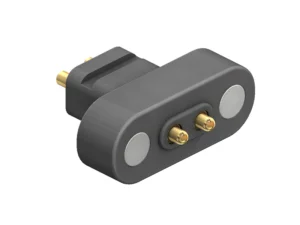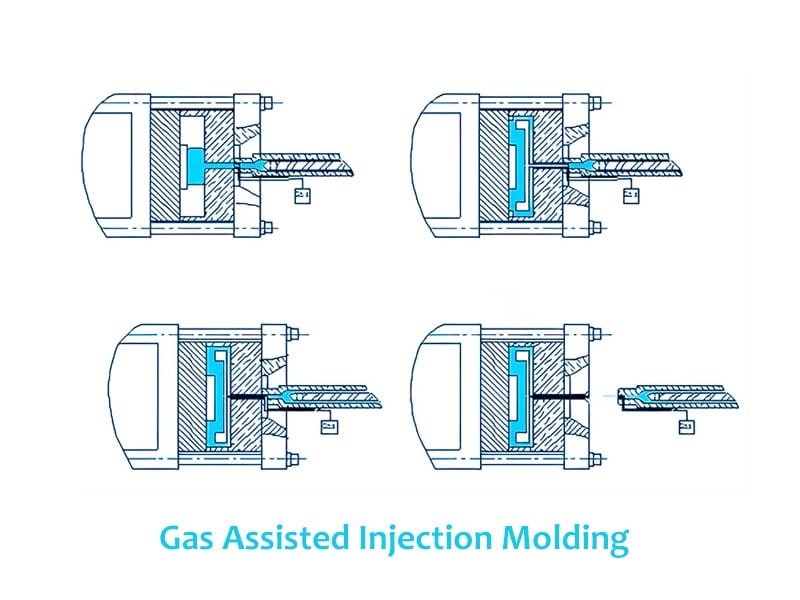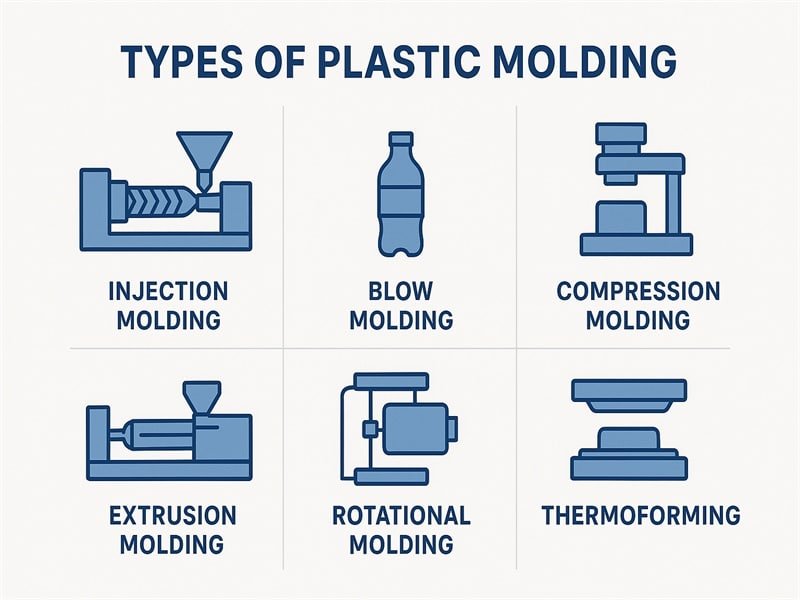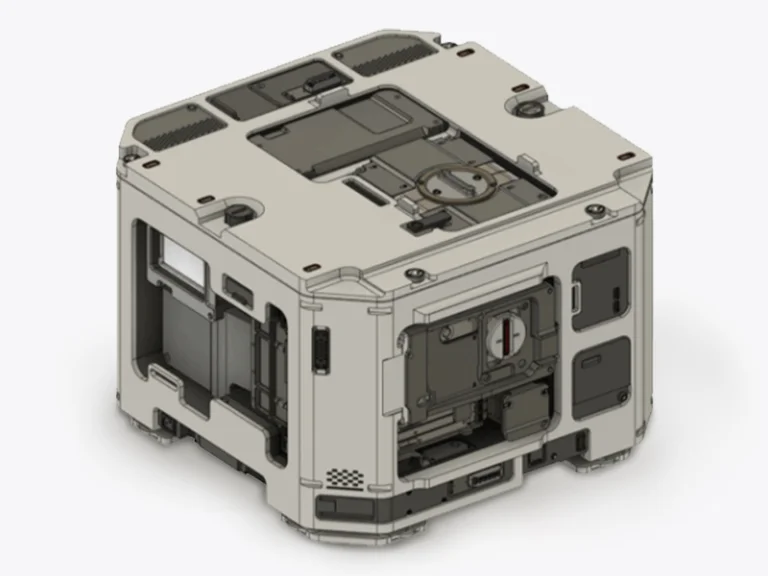The insert molding process is a specialized injection molding technique that involves embedding pre-fabricated inserts, typically made of metal or other materials, into a plastic part during the molding process.This integration process allows for the production of components with improved functionality, such as threads or anchoring points for fastening. In today’s manufacturing environment, the relevance of the insert molding process is increasingly significant. Industries such as automotive, electronics, and medical devices are leveraging insert molding to create durable and lightweight products that meet stringent quality standards. In this post, we will explore the insert injection molding process, the pros and cons, and the comparision between insert molding and overmolding.
What is Insert Molding Process?
The insert molding process is a specialized method of injection molding that involves placing pre-formed inserts, typically made of metal or other materials, into a mold cavity before injecting molten plastic around them. This technique allows the inserts to become an integral part of the final product, enhancing its mechanical properties and functionality. Unlike traditional plastic injection molding, which typically produces parts made entirely of plastic, the insert molding process combines different materials, resulting in components that leverage the strengths of both plastics and metals.
In comparison to conventional plastic injection molding. Traditional plastic injection molding focuses on shaping plastic materials, while custom insert injection molding solutions incorporates additional elements that can improve durability and usability. It is a plastic injction molding with inserts. For instance, metal insert molding can provide threads for fastening, which is especially useful in applications where plastic alone may not withstand repeated use or stress. This integration reduces the need for secondary assembly processes, ultimately saving time and costs in production. The versatility of thermoplastic insert molding further enhances its applicability across various industries, enabling the use of different thermoplastic materials for both the inserts and the molded parts.

Steps in the Insert Molding Process
The insert molding process is similar to conventional injection molding. They all involve melting and injecting molten plastics into the injection mold. However, plastic insert molding involves loading inserts in the mold befor the molten plastic injection into the mold cavity. Here is a stepwise to the plastic insert molding process.

1. Loading Inserts into the Mold
The first step in the insert molding process involves placing pre-formed inserts into the mold cavity. There are two primary techniques for loading inserts:
Manual Insertion: In this method, skilled operators manually place the inserts into the mold. This technique is more affordable and suitable for low-volume production or prototypes, but it may lack precision and consistency.
Automated Insertion: Automated machinery or robotic systems can be employed for high-volume manufacturing. This method ensures accurate and consistent placement of inserts, significantly increasing efficiency and reducing cycle times.
Proper positioning of the inserts is crucial for successful molding, as any misalignment can lead to defects in the final product.
2. Injecting Molten Plastic into the Mold
Once the inserts are securely in place, molten plastic—typically thermoplastic resin—is injected into the mold under high pressure.
The injection pressure forces air out of the mold through venting holes, minimizing the risk of air bubbles forming within the plastic.
The high pressure ensures that the molten plastic flows evenly around the inserts, completely encapsulating them and creating a strong bond.
3. Cooling and Solidifying
After injection, maintaining an appropriate temperature is for uniform solidification of the plastic around the inserts. The cooling phase allows the molten plastic to transition into a solid state. During this step, proper temperature management and holding pressure will help to prevent warping and uneven solidifcation.
4. Opening the Mold and Removing the Molded Part
Once the plastic has cooled and solidified sufficiently, the mold is opened to extract the molded part. Techniques for safely removing molded parts include:
Manual Removal: In some cases, operators may need to carefully extract parts by hand.
Automated Systems: For high-volume production, automated systems can efficiently remove parts from molds, reducing labor costs and increasing throughput.
5. Post-processing
After removal from the mold, several post-processing steps may be necessary to enhance the functionality and appearance of insert molded parts. Common post-processing activities include:
Trimming: Excess material, known as sprue or runners, may need to be cut away from the molded part.
Deburring: Removing sharp edges or burrs that may have formed during molding to ensure smooth surfaces.
Finishing: Additional treatments such as painting or surface texturing can be applied depending on product requirements.
Breaking the Limits of Traditional Processes | Experts in the Mass Production of High-precision Insert injection molding
Considerations Before Insert Molding
The insert molding process is quite complex, so before embarking on the insert molding process, several critical considerations must be taken into account to ensure successful outcomes and high-quality products.
1. Types of Inserts
Choosing the right type of insert is fundamental to the success of the insert molding process. The selected insert must withstand the temperature and pressure extremes experienced during molding to maintain structural integrity. Inserts can be made from various materials, including metal and high-performance plastics. Common types include:
- Standard Inserts: Pre-manufactured components used for common shapes.
- Core Inserts: Used for forming complex internal geometries.
- Cavity Inserts: Define the outer surfaces of molded parts.
- Exchangeable Inserts: Allow for quick changes between different mold configurations.
2. Insert Location
The placement of inserts within the mold is crucial as it affects the forces acting on them during the molding process. Ideal insert positioning enhances adhesion and ensures that the inserts remain stable throughout injection and cooling. Proper insert location also minimizes stress points, which can lead to defects in the final product.
3. Narrowing the Gap Between Metal Part Inserts
Maintaining a narrow gap between metal part inserts is advisable. This design consideration helps ensure that the injected molten plastic fully covers the inserts, facilitating a solid bond between the metal and plastic materials. A well-managed gap prevents voids and improves the structural integrity of the insert molded part.
4. Select Appropriate Resin and Molding Conditions
Choosing the right resin is vital for achieving optimal results in insert molding. The selected thermoplastic must be compatible with both the inserts and the intended application of the final product. Factors such as thermal expansion rates and bonding characteristics should be considered to prevent issues like warping or weak bonds during solidification. The typical examples of plastic injection molding materials include Nylon, ABS, Polycarbonate, and polyethylene. and the typical insert materials include brass and steel.
Additionally, controlling molding conditions such as injection speed, temperature, and pressure is essential for ensuring consistent quality across production batches.
5. Choose Right Mold
The design of the mold itself is critical in insert molding. A well-designed mold will not only helps keep the proper insert placement but also ensure efficient material flow and cooling. It must accommodate both the inserts and the surrounding material while withstanding high temperatures and pressures during injection.
6. The Cost
Cost considerations are paramount when planning an insert molding project. The cost in insert molding process includes the cost of the inserts and the labor cost. The action adding of inserts will also incerase in unit price.
7. Production Volume
Finally, understanding production volume is essential in determining whether insert molding is the right choice for a specific project. For high-volume production, automated systems for loading inserts and injecting plastic can significantly enhance efficiency and reduce per-unit costs. Conversely, low-volume projects may benefit from manual insertion techniques that are more cost-effective despite longer cycle times.
Advantages of Insert Molding Process
The insert molding process offers numerous advantages. Here are some key benefits:
1. Enhanced Strength and Durability
One of the primary advantages of insert molding is the enhanced strength and durability of molded parts. By combining plastic resin with sturdy metal inserts, the final product gains rigidity while maintaining flexibility. This combination allows parts to withstand higher stress levels and reduces friction with surrounding components, making them ideal for demanding applications in industries such as automotive and aerospace.
2. Reduction in Assembly Time and Cost
Insert molding significantly reduces assembly time and costs by integrating multiple components into a single injection molding process. This eliminates the need for separate assembly steps, which not only cuts labor costs but also minimizes the risk of errors during assembly. As a result, manufacturers can achieve faster production cycles and improved efficiency.
3. Size and Weight Reduction
The use of inserts in the molding process allows for a reduction in both size and weight of molded products. By eliminating the need for additional fastening elements, insert molding can produce components that are up to 50% lighter than their all-metal counterparts. This weight reduction is particularly beneficial in applications where performance and efficiency are critical, such as in automotive parts or portable electronic devices.
4. Increased Design Flexibility
Insert molding provides increased design flexibility, enabling engineers to create complex shapes and integrate multiple functions within a single component. This capability is particularly valuable in industries that require precise customization, such as medical devices and consumer electronics. The ability to incorporate various materials into one part allows for innovative designs that would be challenging or impossible to achieve with traditional methods.
5. Cost-Effectiveness for High-Volume Production
For high-volume production runs, insert molding proves to be cost-effective due to its streamlined manufacturing process. The elimination of secondary assembly operations reduces overall production costs while maintaining high quality and consistency across products. This makes insert molding an attractive option for manufacturers looking to optimize their production efficiency without sacrificing quality.
Disadvantages of Insert Molding Process
While the insert molding process offers numerous advantages, it also comes with several disadvantages that manufacturers must consider before implementation. Here are the key drawbacks:
1. Higher Initial Setup Costs
One of the most significant disadvantages of insert molding is the higher initial setup costs associated with molds and machinery. The design and fabrication of molds that accommodate inserts can be complex and costly, often ranging from $5,000 to $100,000 depending on the complexity and material used. This initial investment may pose challenges for small-scale manufacturers or those with limited resources, making it less accessible compared to traditional molding methods.
2. Complex Design Requirements
Insert molding requires specialized tooling and mold designs to ensure optimal positioning and adhesion of the inserts. The complexity of these designs can lead to longer lead times in development and increased costs. The insert molding requires consideration of more factors, such as the insertion angle and placement. That makes the molde design more complex.
3. Precision Control Needed
The insert molding process demands high precision in both mold design and injection parameters. Any inaccuracies in positioning the inserts can result in defects in the final product, such as poor adhesion or uneven distribution of plastic around the inserts. Maintaining tight tolerances requires advanced machinery and skilled operators, which can increase operational costs and complexity.
Applications of Insert Molding Process
The insert molding process is widely utilized across various industries due to its ability to create strong, durable, and functional components.
Automotive
The automotive industry extensively employs insert molding to produce lightweight and durable components. Common applications include:
Electrical Connectors, Sensor Housings, Dashboard Assemblies, etc.

Electronics
In the electronics sector, insert molding is favored for its ability to eliminate the need for fasteners and soldering, creating seamless assemblies. Such as Control Panels, Knobs for Appliances, Encapsulation of Threaded Inserts.

Medical Devices
The medical field benefits significantly from insert molding, producing both simple and complex components. Key applications include: Surgical Instruments, Medical Implants, Prosthetics, etc.

Consumer Goods
The consumer goods industry employs insert molding for a variety of products, such as: Connectors, Housings, etc.

Comparison: Insert Molding vs Overmolding
The insert molding process and overmolding are both advanced injection molding techniques that allow for the creation of multi-material products. While they share some similarities, they also have distinct differences.
| Feature | Overmolding | Insert Molding |
|---|---|---|
| Definition | A process where a new layer of plastic material is molded over a pre-formed substrate. | The process of placing a metal or other material insert into the mold cavity and injecting plastic around it. |
| Materials Used | Typically involves two different materials: an outer layer and the substrate. | Generally involves plastic molded around metal or other hard material inserts. |
| Molding Process | The substrate is first molded, then a second molding process is done to cover it. | The insert is placed in the mold first, followed by the injection of plastic. |
| Common Materials | Soft plastics molded over hard plastics or other substrates. | Plastic molded around metal, ceramic, or other hard material inserts. |
| Common Applications | Handles, buttons, electronic housings, etc. | Electrical connectors, automotive parts, etc. |
| Advantages | Provides better surface texture, anti-slip properties, and can handle complex shapes. | Enhances part strength, improves the bond between insert and plastic. |
| Process Complexity | Requires two molding cycles (first for the substrate, then for overmolding). | Generally simpler; insert is pre-prepared and placed into the mold before injection. |
| Cost | Typically higher due to the additional molding step. | More cost-effective, especially when inserts are inexpensive. |
| Bonding Strength | The bond between the outer layer and substrate depends on material adhesion and surface design. | The bond between the insert and plastic is achieved through mechanical fit and chemical adhesion. |
| Design Flexibility | Allows for complex surface characteristics like softness or grip. | Primarily focuses on the bond between the insert and plastic for functional purposes. |
Summary:
- Overmolding involves molding a soft plastic layer over a harder substrate, often used to improve surface texture, ergonomics, or add extra functionality such as anti-slip properties. It requires multiple injection steps and is ideal for products that need multiple material properties.
- Insert Molding places a pre-formed insert (often metal or ceramic) into the mold and injects plastic around it, increasing the part’s mechanical strength or functionality. It’s simpler, more cost-effective, and used in applications that require a strong bond between the insert and plastic.
Conclusion
The insert molding solutions is a unique manufacturing process for creating high-quality, durable components that combine the benefits of both plastic and metal materials. This technique not only enhances the strength and functionality of molded parts but also streamlines production by reducing assembly time and costs. Whether in the automotive, electronics, or medical device sectors, insert molding can provide significant advantages over traditional methods.
If you are looking for custom insert molding service, Jiangzhi is the professional manufacturer for your project.




